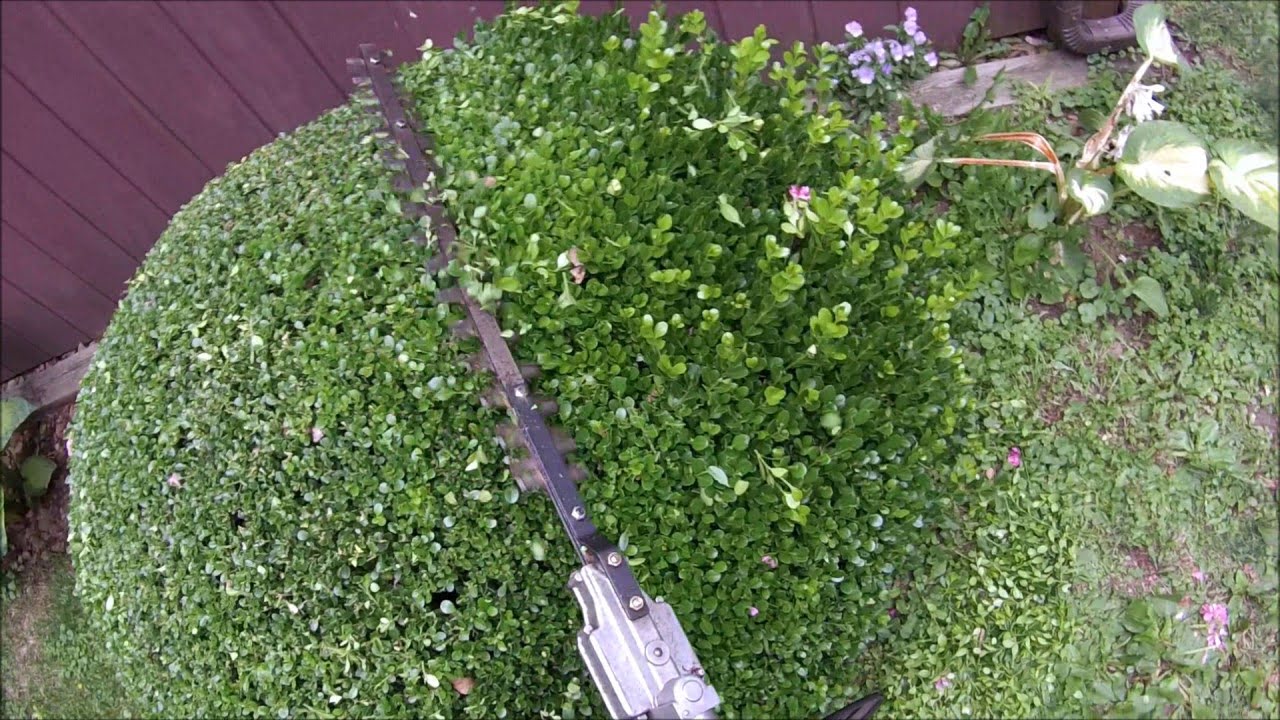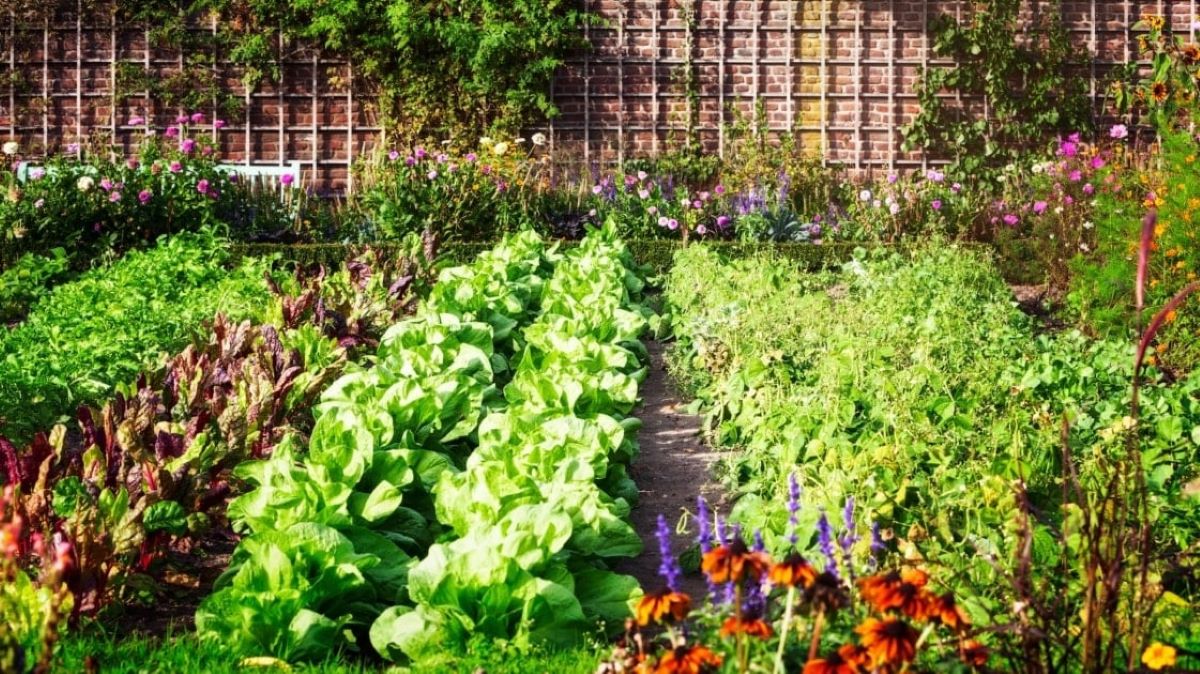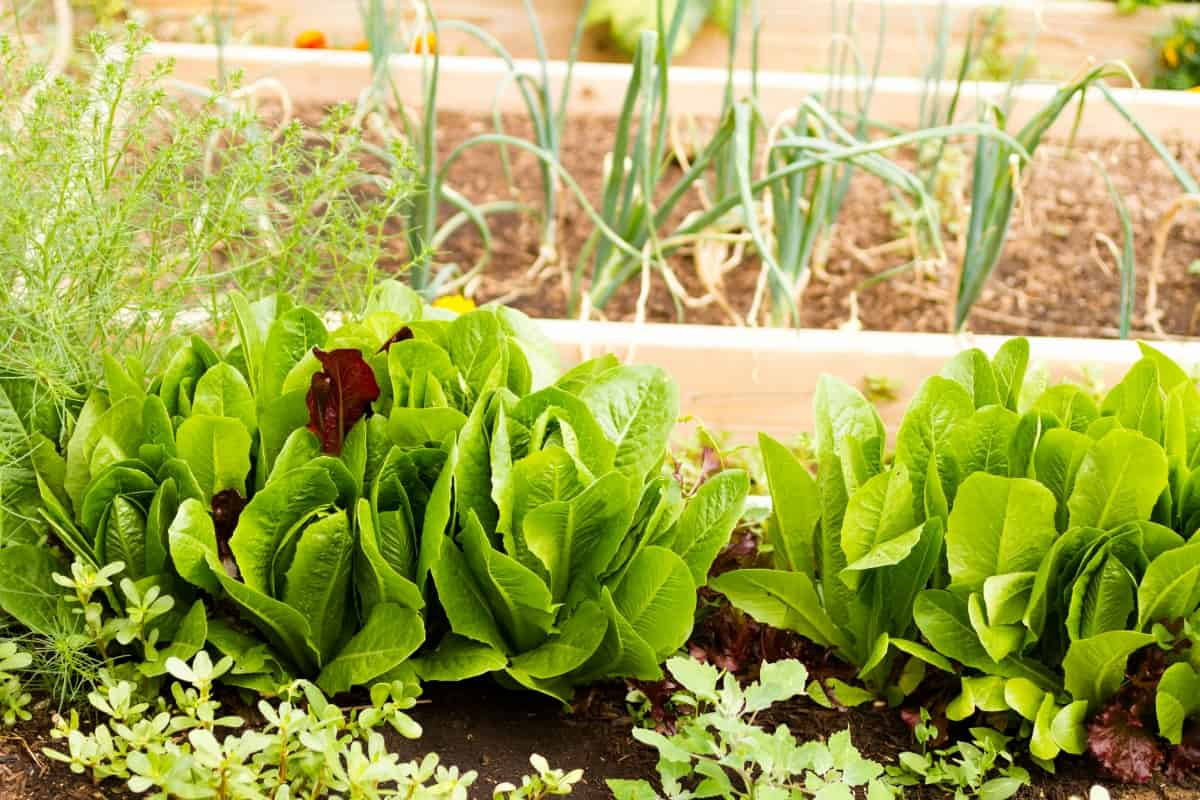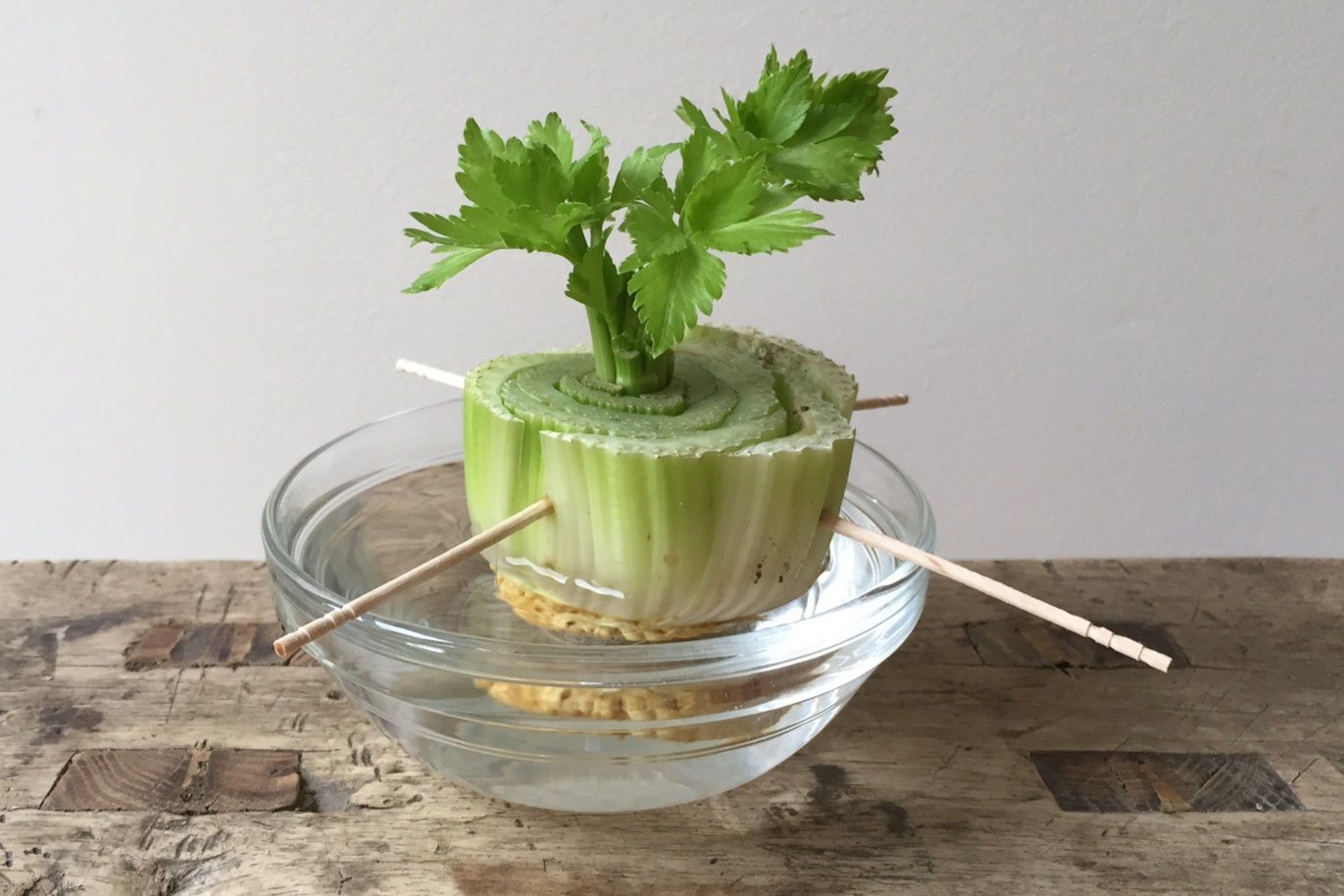Home>Types of Gardening>Edible Gardening>What Vegetables Grow Year Round


Edible Gardening
What Vegetables Grow Year Round
Modified: January 29, 2024
Discover the joys of edible gardening with our guide on what vegetables grow year round. Start growing your own fresh produce and enjoy a bountiful harvest throughout the seasons.
(Many of the links in this article redirect to a specific reviewed product. Your purchase of these products through affiliate links helps to generate commission for Chicagolandgardening.com, at no extra cost. Learn more)
Table of Contents
Introduction
Welcome to the exciting world of edible gardening! Growing your own vegetables is not only a rewarding and fulfilling experience but also a great way to ensure a constant supply of fresh and organic produce. One of the key factors to consider when planning your edible garden is which vegetables you can grow year-round. By selecting a variety of plants that thrive in different seasons, you can enjoy a bountiful harvest throughout the year.
Whether you have a spacious backyard or a small balcony, there are plenty of options available to cater to your edible gardening needs. From leafy greens to root vegetables, herbs to alliums, and cruciferous vegetables to legumes, there is a wide range of delicious vegetables that can be grown year-round. By understanding the unique characteristics of each category, you can effectively plan and create a continuous supply of homegrown goodness.
Before diving into the specific vegetables, it’s important to note that the success of your edible garden relies on several factors such as climate, soil quality, sunlight exposure, and your dedication to proper care and maintenance. It’s worth investing time in researching and understanding the specific requirements of the vegetables you wish to grow, as this will greatly increase your chances of a successful and abundant yield.
Remember, the joy of edible gardening is not just limited to the end result of fresh vegetables on your plate. It’s also about the journey of nurturing plants, observing their growth, and connecting with nature in a meaningful way. So grab your gardening gloves, prepare your soil, and let’s dive into the wonderful world of vegetables that you can grow year-round!
Leafy Greens
Leafy greens are some of the most versatile and nutritious vegetables you can grow in your edible garden. They are packed with essential vitamins, minerals, and antioxidants, making them a valuable addition to any diet. The good news is that many leafy greens can be grown year-round in a variety of climates.
One popular leafy green that can be grown throughout the year is spinach. This nutrient-rich vegetable thrives in cooler temperatures and can tolerate mild frost. Start seeds indoors in early spring and transplant them into your garden once the soil has warmed up. Regularly harvest the outer leaves to encourage continued growth.
Kale is another leafy green that is a perfect candidate for year-round cultivation. This hardy vegetable can withstand both cold and warm weather, making it a reliable option in a variety of climates. Sow seeds directly into the ground in early spring or early fall for a continuous harvest. Regularly trim the outer leaves, and new ones will continue to grow from the center.
Lettuce is a staple in many diets and is surprisingly easy to grow. There are a variety of lettuce types, including romaine, butterhead, and leaf lettuce, each with its own unique flavor and texture. Lettuce prefers cooler temperatures, so it is best sown in early spring or early fall. Harvest the outer leaves when they reach the desired size, and the plant will continue producing more.
Arugula is a leafy green with a peppery and slightly bitter taste. It thrives in cool weather and is quick to mature, making it an excellent choice for year-round cultivation. Sow seeds directly into the ground or in containers throughout the spring and fall for a continuous supply of fresh arugula leaves.
Swiss chard is a nutritional powerhouse that can be grown year-round in mild temperatures. This versatile vegetable comes in a variety of vibrant colors, including green, red, and yellow. Plant seeds directly in the ground in early spring and continue sowing throughout the year for a continuous harvest. Regularly harvest outer leaves from the plant to promote new growth.
Leafy greens are not only delicious but also relatively low-maintenance. They prefer well-drained soil, regular watering, and partial shade in warmer climates. By incorporating a variety of leafy greens into your edible garden, you can enjoy a constant supply of fresh and healthy greens to enhance your meals throughout the year.
Root Vegetables
Root vegetables are an essential component of any well-rounded vegetable garden, as they provide a hearty and nutritious addition to meals. Fortunately, many root vegetables can be grown year-round, making them a reliable choice for your edible garden.
Carrots are a popular root vegetable known for their vibrant colors and sweet flavors. They can be grown year-round in many climates, although their growth rate may vary depending on the season. Sow seeds directly into the ground in early spring or late summer for a continuous harvest. Depending on the variety, carrots can take anywhere from 70 to 120 days to reach maturity. Regularly thin the seedlings to ensure proper spacing and promote healthy growth.
Beets are not only delicious but also versatile, as both the leaves and roots are edible. They can be grown year-round in milder climates, but they prefer cooler temperatures. Sow seeds directly into the ground in early spring or late summer, and they will typically be ready to harvest in about 50 to 70 days. Regularly harvest the outer leaves to encourage the growth of new foliage.
Radishes are a quick-growing root vegetable that can be enjoyed year-round. They are known for their crisp texture and peppery flavors. Sow radish seeds directly into the ground throughout the growing season for a continuous harvest. Depending on the variety, radishes can be ready to harvest in as little as 20 to 30 days. Pull them from the ground as soon as they reach the desired size.
Potatoes are a classic root vegetable that are incredibly versatile and a staple in many diets. They can be grown year-round in cool climates or during the cooler months in warmer regions. Plant seed potatoes in well-drained soil in the early spring for a late summer or fall harvest. As the plants grow, they will produce tubers beneath the soil surface. Harvest when the plant tops have withered, and allow the potatoes to cure before storing them.
Parsnips are a root vegetable that develops a rich, sweet flavor when exposed to cold temperatures. They can be grown year-round in cooler climates. Sow seeds directly into the ground in early spring or late summer, and they will typically take around 90 to 120 days to reach maturity. Regularly water the plants to ensure proper growth and harvest them when they have reached their full size.
Root vegetables are relatively low-maintenance and can be grown in a variety of soil types. They generally require consistent moisture and well-drained soil to thrive. By incorporating a variety of root vegetables into your edible garden, you can enjoy a diverse range of flavors and textures throughout the year.
Cruciferous Vegetables
Cruciferous vegetables are nutrient-dense powerhouses that not only provide excellent health benefits but also add diversity and flavor to any meal. Luckily, many cruciferous vegetables can be grown year-round, making them a valuable addition to your edible garden.
Broccoli is a popular cruciferous vegetable that can be grown year-round in many climates. It thrives in cooler temperatures and can withstand light frost. Start seeds indoors in early spring and transplant the seedlings into your garden once the soil has warmed up. Regularly harvest the central head of the broccoli plant, and side shoots will continue to develop for an extended harvest.
Cauliflower is another versatile cruciferous vegetable that can be grown year-round. It prefers cooler temperatures and requires consistent moisture for optimal growth. Sow seeds indoors in early spring and transplant the seedlings outdoors once the soil has warmed up. Regularly check the plants for any signs of pests or disease and harvest the cauliflower heads when they reach a desirable size.
Cabbage is a hardy cruciferous vegetable that can be grown throughout the year in various climates. There are many different varieties of cabbage, including green, red, and savoy, each with its own unique flavor and texture. Sow seeds indoors in early spring or late summer and transplant the seedlings outdoors once they are established. Harvest the cabbage heads when they are firm and compact.
Kale, although mentioned earlier in the leafy greens section, is also considered a cruciferous vegetable. It is a versatile plant that can be grown year-round in many climates. Sow seeds directly into the ground in early spring or early fall for continuous harvest. Regularly trim the outer leaves to promote new growth and enjoy them in various dishes.
Brussels sprouts are a unique cruciferous vegetable that form small green buds along the stalk. They are a cool-weather crop and can be grown year-round in mild climates. Start seeds indoors in early spring and transplant the seedlings outdoors once they have developed. As the plants grow, the sprouts will develop and can be harvested when they are firm and compact.
Cruciferous vegetables generally require well-drained soil, consistent moisture, and adequate spacing for proper growth. They can also benefit from regular feeding with organic fertilizers. By incorporating a variety of cruciferous vegetables into your edible garden, you can enjoy their distinctive flavors and reap the nutritional benefits throughout the year.
Herbs
Herbs are a delightful addition to any garden, bringing fragrance and flavor to your dishes. Many herbs can be grown year-round, making them a versatile and rewarding choice for your edible garden. Whether you have a large garden bed or a few pots on your balcony, herbs are easy to grow and require minimal maintenance.
Basil is a popular herb known for its vibrant aroma and distinct taste. It thrives in warm weather and can be grown year-round in temperate climates. Start seeds indoors in early spring and transplant the seedlings outdoors once the danger of frost has passed. Harvest the leaves regularly to promote new growth and maintain the plant’s bushy shape.
Parsley is an herb widely used for its fresh and earthy flavors. It can be grown year-round in many climates, as it tolerates both cold and warm temperatures. Sow seeds directly into the ground or in containers in early spring for a continuous harvest. Harvest the outer leaves as needed, and the inner leaves will continue to grow.
Chives are a versatile herb that can add a mild onion flavor to various dishes. They can be grown year-round in temperate climates and prefer cooler temperatures. Plant seedlings or divide existing plants in early spring or early fall. Regularly trim the leaves to encourage new growth and enjoy them in salads, soups, or as a garnish.
Mint is a refreshing herb that is known for its invigorating aroma and cool taste. It can be grown year-round in many climates, although it may require more protection during colder months. Plant mint in containers to prevent its invasive nature from taking over your garden. Harvest the leaves as needed, and they can be used in teas, desserts, or as a flavoring agent in various recipes.
Rosemary is an herb renowned for its aromatic fragrance and distinct pine-like flavor. It can be grown year-round in mild to warm climates. Plant rosemary in well-drained soil in a sunny location. Harvest the stems as needed, and they can be used to flavor roasted meats, vegetables, or infused oils.
Herbs generally require well-drained soil, regular watering, and ample sunlight to thrive. They can be grown in containers or directly in the ground, depending on your available space. By incorporating a variety of herbs into your edible garden, you can elevate your culinary creations with fresh and aromatic flavors throughout the year.
Alliums
Alliums are a family of plants that encompass various flavorful and aromatic bulbs. These versatile crops can be grown year-round, adding unique flavors and textures to your meals. From onions to garlic and shallots to leeks, alliums are a must-have in any edible garden.
Onions are a staple ingredient in many culinary creations. They can be grown year-round in a wide range of climates. Start onion seeds indoors in early spring or early fall and transplant the seedlings outdoors once they are established. Regularly water the onion plants to promote bulb development and harvest them when the tops have dried and fallen over.
Garlic is a pungent and flavorful allium that can be grown year-round in many climates. It typically takes several months for garlic bulbs to develop, so it’s best to plant them in the fall for a summer harvest. Separate the garlic cloves and plant them with the pointed end facing up. Harvest the bulbs when the tops have dried and turned brown.
Shallots are a versatile allium that combines the flavors of onions and garlic. They can be grown year-round in many climates. Plant shallot sets or bulbs in well-drained soil in early spring or early fall. As the plants grow, they will form clusters of bulbs that can be harvested when the tops have dried and the bulbs have fully developed.
Leeks are a milder allium with a distinctive flavor. They can be grown year-round in cooler climates and during the cooler months in milder regions. Start leek seeds indoors in early spring and transplant the seedlings outdoors once they are established. Regularly water the leek plants to encourage healthy growth and harvest them when they have reached the desired size.
Alliums generally prefer well-drained soil and adequate spacing for proper growth. They can be prone to pests and diseases, so it’s important to monitor and address any issues promptly. By incorporating a variety of alliums into your edible garden, you can elevate the flavors of your dishes and enjoy their unique and aromatic profiles throughout the year.
Legumes
Legumes are a group of plants that include various beans, peas, and lentils, known for their high protein content and ability to enrich the soil with nitrogen. These versatile crops can be grown year-round, providing a nutritious and sustainable addition to your edible garden.
Green beans, also known as snap beans or string beans, are a popular legume that can be grown year-round in many climates. Sow green bean seeds directly into the ground once the soil has warmed up in the spring. Regularly harvest the pods when they are young and tender to encourage continuous production.
Peas are another delicious legume that can be grown year-round, although they tend to prefer cooler weather. Sow pea seeds directly into the ground in early spring or early fall. Depending on the variety, peas can be harvested when the pods are plump and full. Regularly pick the pods to promote further growth.
Lima beans, also known as butter beans, are a warm-season legume that can be grown year-round in milder climates. Sow lima bean seeds directly into the ground once the soil has warmed up in the spring. Harvest the pods when they are fully developed, and the beans inside are tender.
Soybeans are a versatile legume that can be grown year-round in many climates. They are typically grown as a summer crop, but with the right variety selection, they can thrive in cooler temperatures as well. Sow soybean seeds directly into the ground in the spring or early summer. Harvest the pods when they are mature and the beans inside are plump.
Lentils are a legume known for their small, lens-shaped seeds and high nutritional value. They can be grown year-round, although they prefer cooler temperatures. Sow lentil seeds directly into well-drained soil in early spring or early fall. Harvest the pods when they have turned yellow and the seeds inside are fully mature.
Legumes generally require well-drained soil and adequate water supply for proper growth. They also benefit from support structures such as trellises or stakes to help the plants climb and prevent them from sprawling on the ground. By incorporating a variety of legumes into your edible garden, you can enjoy their protein-rich harvests and contribute to the health of your soil throughout the year.
Conclusion
Growing your own vegetables is a rewarding and fulfilling experience, and with proper planning, you can enjoy a year-round harvest from your edible garden. By selecting a variety of vegetables that thrive in different seasons, you can ensure a continuous supply of fresh and organic produce that will enhance your meals and promote a healthier lifestyle.
From leafy greens to root vegetables, cruciferous vegetables to herbs, alliums to legumes, there is a wide range of options for growing vegetables year-round. Each category brings its own unique flavors, textures, and nutritional benefits to the table. By understanding their specific requirements and providing them with the right growing conditions, you can maximize the success of your edible garden.
Remember, the success of your garden depends on various factors such as climate, soil quality, sunlight exposure, and your dedication to proper care and maintenance. It’s crucial to research and understand the specific needs of the vegetables you choose to grow, ensuring they receive adequate water, sunlight, and nutrients.
Edible gardening is not just about the end result of fresh vegetables on your plate; it’s also an opportunity to connect with nature, observe the growth of plants, and develop a deeper appreciation for where your food comes from. It allows you to take control of what you eat and make conscious choices about the quality and sustainability of your meals.
So, whether you have a spacious backyard or a small balcony, start your journey into edible gardening and enjoy the countless benefits it brings. Experiment with different vegetables, explore new flavors, and be amazed at the joy of harvesting your own homegrown produce. With a bit of knowledge, care, and enthusiasm, you can create a thriving year-round edible garden that will nourish both your body and soul.










